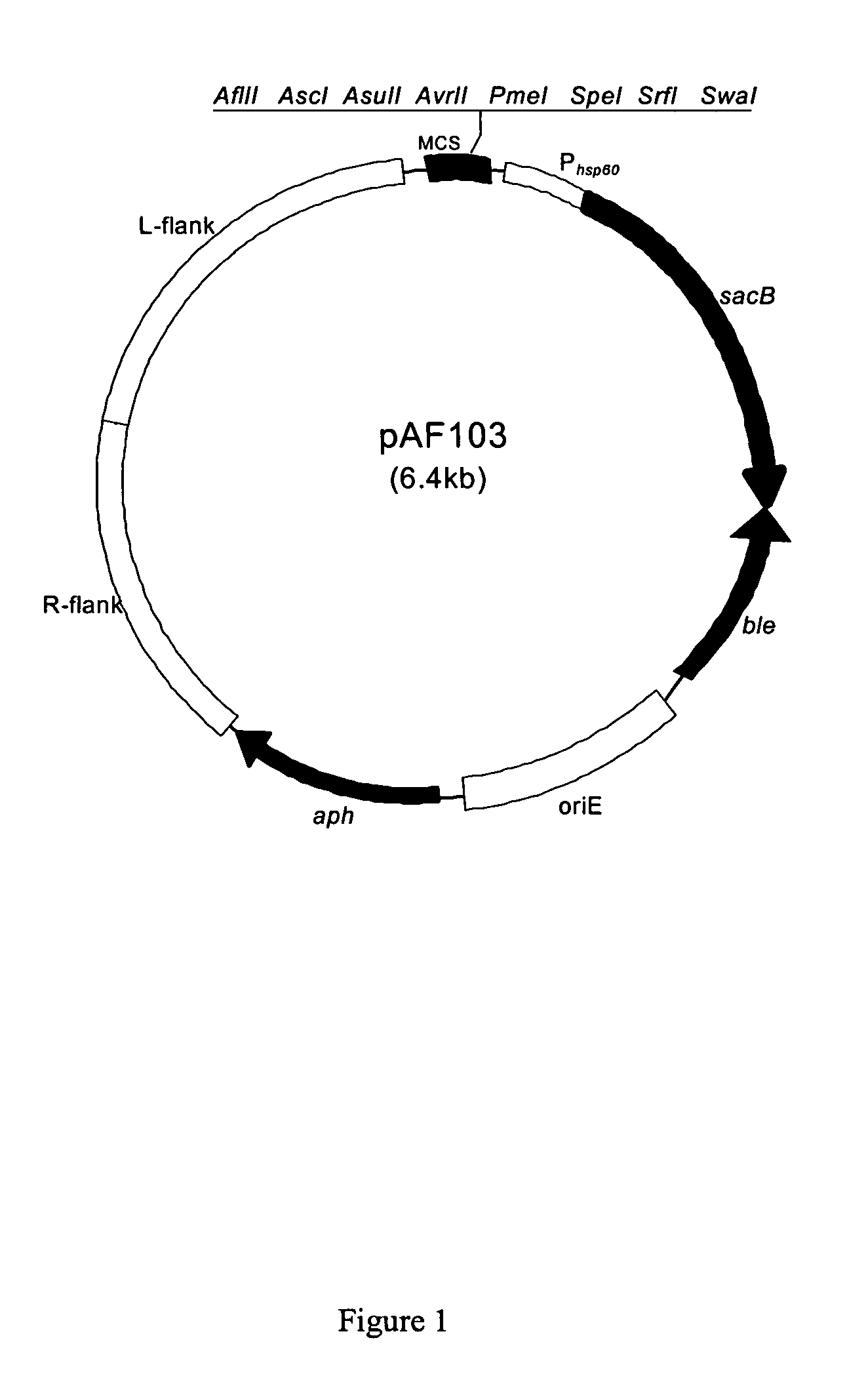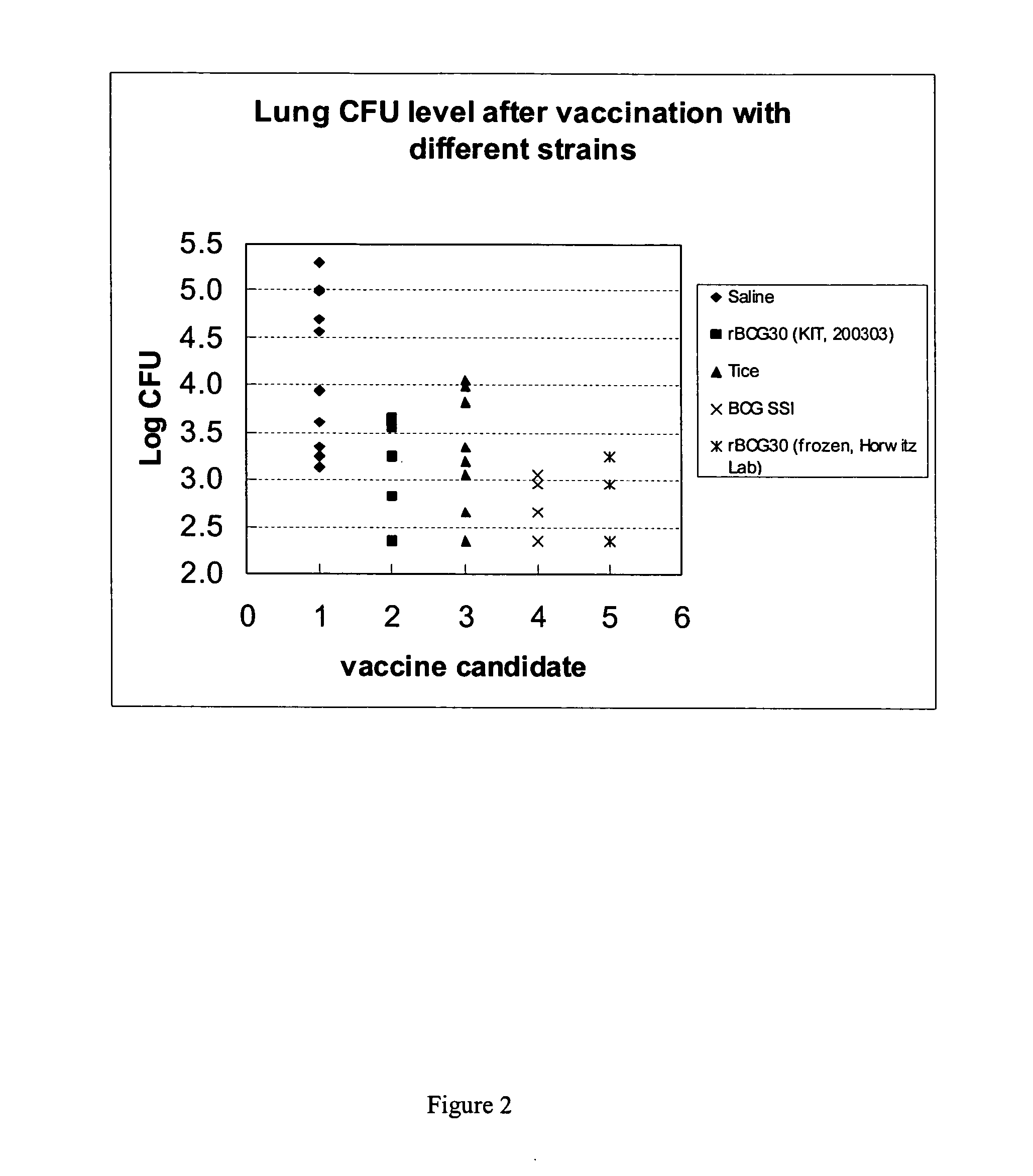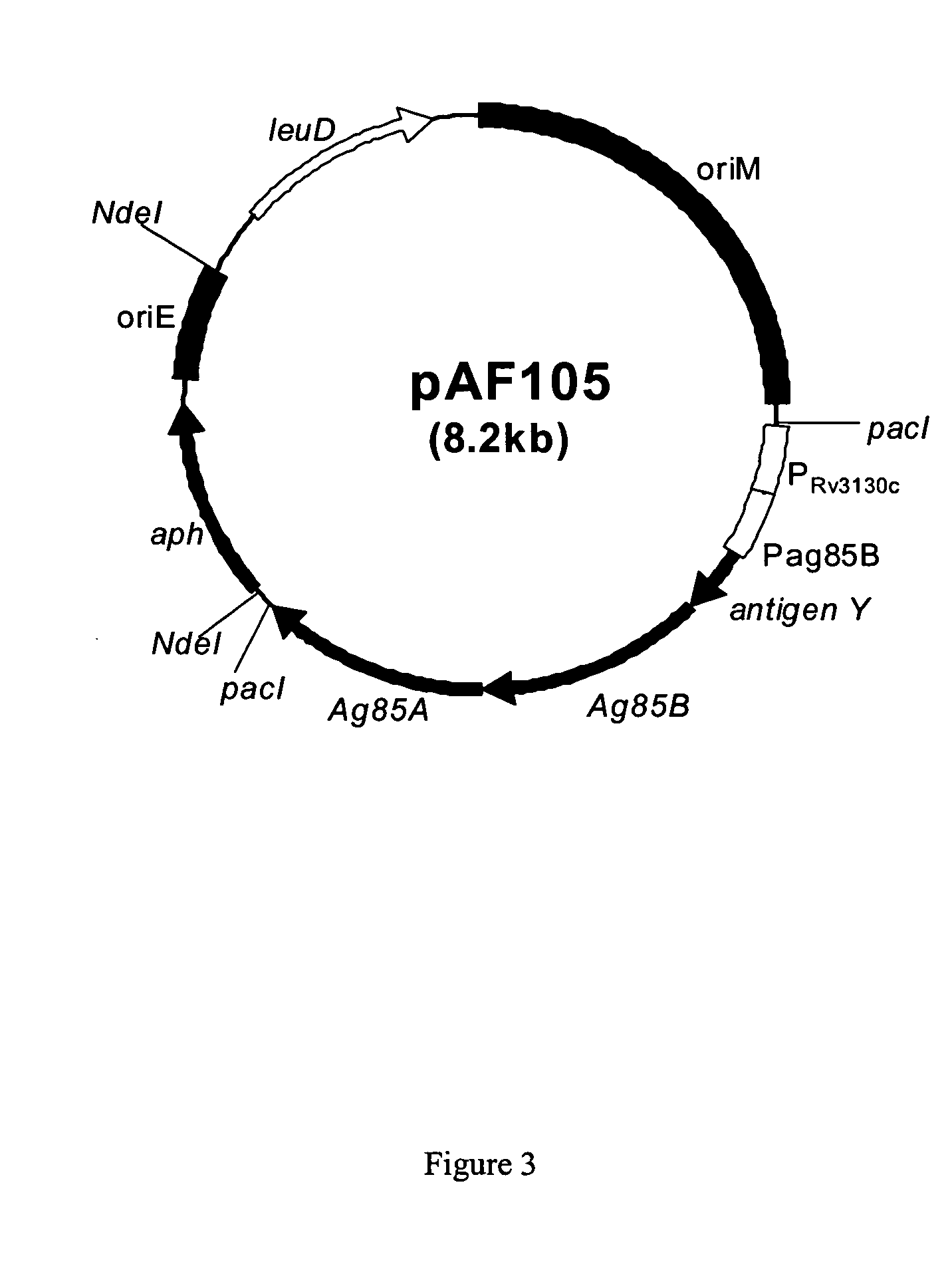Electroporation of mycobacterium and overexpression of antigens in mycobacteria
a technology of mycobacterium and electrophoresis, which is applied in the field of mycobacterium strains, can solve the problems of difficult replacement of bcg in trials to evaluate candidate tb vaccines, and the definitive evidence that a new tb vaccine possesses improved potency cannot be obtained from controlled field trials in humans, so as to enhance the immunogenicity of such antigens, improve the potency, and increase the effect of potency
- Summary
- Abstract
- Description
- Claims
- Application Information
AI Technical Summary
Benefits of technology
Problems solved by technology
Method used
Image
Examples
example 1
Potency of Parent BCG Strains in Guinea Pigs: Guinea Pig Protection Study with rBCG 30
[0096] As an example of a study conducted with the existing rBCG30 vaccine, a large guinea pig study was performed aimed at comparing the protective efficacy of two lots of rBCG30 with the parental BCG Tice strain itself and another commercially available BCG vaccine (SSI-1331 strain) used world wide in humans. The two rBCG30 lots were produced either under laboratory conditions (rBCG30-UCLA) or manufactured under GMP conditions (rBCG30-KIT) for human use.
[0097] Guinea pigs (10 animals per group) were immunized via the subcutaneous route with a single dose of 103 cfu of each of the BCG vaccines. A negative control group (saline immunized) was included in the study. Eight weeks after the vaccination, the animals were challenged with the virulent Erdman strain via the aerosol route by calibrating the nebulizer compartment of the Middlebrook airborne-infection apparatus to deliver approximately 10-1...
example 2
Construction of Hosts to Serve as Carriers of Expression Vectors Devoid of Antibiotic-Resistance Markers
[0102] Plasmid construction for knockout leuD gene in BCG Danish 1331 strain: The left and right 1 kb flanking regions of the leuD gene were assembled together by DNA synthesis (DNA 2.0, CA) to form a 2 kb DNA segment with pacI sites on both ends. This DNA fragment was cloned into the above mentioned allele exchange plasmid using PacI restriction enzyme digestion followed by ligation, to produce a leuD knockout plasmid.
[0103] Allele exchange inactivation of the leuD gene: Inactivation of the leuD gene is carried out as described except 50 μg / ml of leucine will be supplemented in the culture medium for the strain with leuD gene knockout. A flowchart of the main steps of the procedure is given in FIG. 4.
Validation of LeuD Knockout:
[0104] Phenotypic test: The obtained strain is tested for its dependence on leucine supplement for growth. Specifically, the bacteria is cultured in ...
example 3
Over-Expression of M. tb Antigens in rBCG Strains
[0106] DNA manipulations: The M. tb antigens TB10.4 (Rv0288), Ag85B (Rv1886c), and Ag85A (Rv3804c) are expressed polycistronically in the order described using promoters from Ag85B plus Rv3130 (Florczyk et al., supra, 2003). DNA sequences encoding a peptide with the sequence KDEL is placed at the end of each antigen as an endoplasmic reticulum retention signal to improve antigen presentation for each antigen. In addition, a 5′-loop structure and 3′-transcriptional terminator sequences are placed to ensure the stability of the transcribed polycistronic mRNA. Finally, restriction enzyme PacI sequences are used to flank both ends for ease in cloning the expression cassette into the expression vector. All DNA in the expression cassette is made by gene synthesis (Picoscript Inc, TX). The expression cassette is cloned into the expression vector by utilizing the PacI sites. After amplification in E. coli, the plasmid is digested with NdeI t...
PUM
| Property | Measurement | Unit |
|---|---|---|
| pH | aaaaa | aaaaa |
| pH | aaaaa | aaaaa |
| pH | aaaaa | aaaaa |
Abstract
Description
Claims
Application Information
 Login to View More
Login to View More - R&D
- Intellectual Property
- Life Sciences
- Materials
- Tech Scout
- Unparalleled Data Quality
- Higher Quality Content
- 60% Fewer Hallucinations
Browse by: Latest US Patents, China's latest patents, Technical Efficacy Thesaurus, Application Domain, Technology Topic, Popular Technical Reports.
© 2025 PatSnap. All rights reserved.Legal|Privacy policy|Modern Slavery Act Transparency Statement|Sitemap|About US| Contact US: help@patsnap.com



